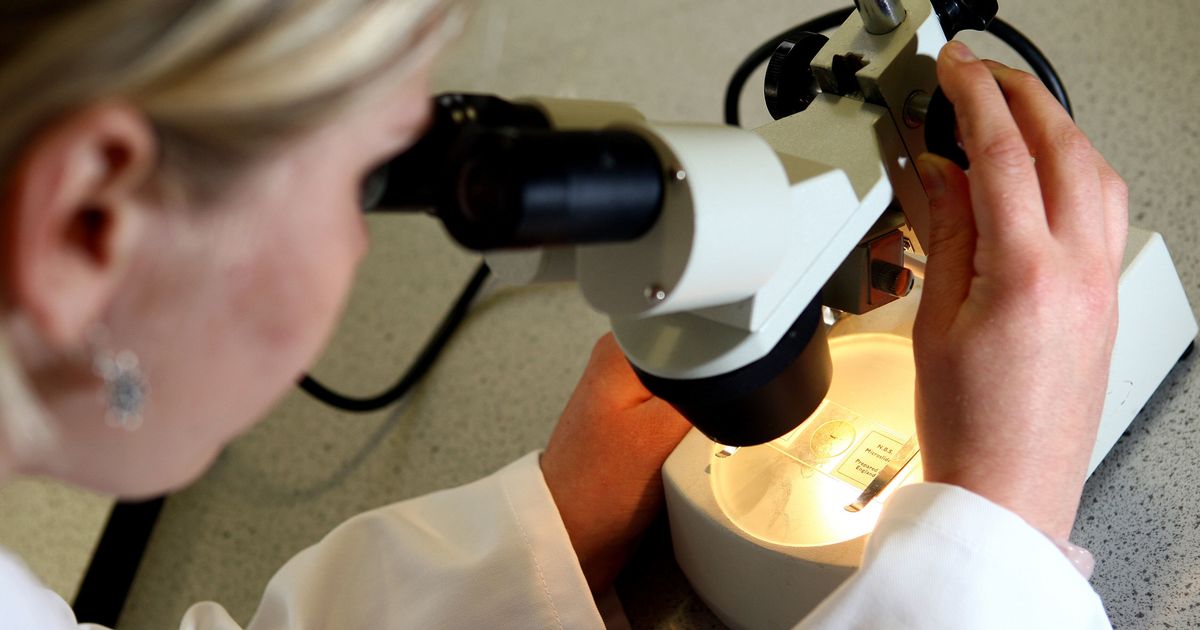Cancer-killing vaccines can be made even more powerful


Revolutionary cancer-killing vaccines could be made drastically more potent in a bid to battle the disease, according to a new study. Scientists said their new technology would arm vaccines with a “powerful weapon with which to kill cancer”.
By changing vaccines’ architecture they doubled the number of T cells, a type of white blood cell, attacking tumours. The developments could make any vaccine far more powerful and more effective at beating cancer, scientists claimed.
Researchers at the International Institute for Nanotechnology (IIN) at Northwestern University in the US focused on preventatives for seven different types of cancer. Experts said they could switch out a cancer protein that “clips” onto the structure and trade it for another disease, “not unlike adding a new charm to a bracelet”.
Vaccines are made up of the antigen, a piece of foreign matter, and the adjuvant, a substance used to boost the strength. Currently, conventional vaccines blend the two together.
But IIN scientists were not happy with the “mish mosh” approach and claimed the structure of vaccine components is as important as the components themselves. Their new vaccine has used chemistry and nanotechnology to change the locations of the antigen and adjuvant and make the medicine more targeted.
Editing the vaccine’s architecture allowed scientists to double the number of T cells attacking the cancer, and activate 30 per cent more of the same cells. The new structure contained multiple targets helping the immune system to find the tumour cells.
Structural changes to improve vaccine strength have, until now, been largely ignored, the researcher said. Dr Chad Mirkin, IIN director, said: “The work shows that vaccine structure and not just the components is a critical factor in determining vaccine efficacy.
“Vaccines developed through rational vaccinology deliver the precise dose of antigen and adjuvant to every immune cell, so they are all equally primed to attack cancer cells. If your immune cells are soldiers, a traditional vaccine leaves some unarmed; our vaccine arms them all with a powerful weapon with which to kill cancer.
“Which immune cell ‘soldiers’ do you want to attack your cancer cells? It is remarkable, when altering the placement of antigens in two vaccines that are nearly identical from a compositional standpoint, the treatment benefit against tumours is dramatically changed.
“One vaccine is potent and useful, while the other is much less effective. Where and how we position the antigens and adjuvant within a single architecture markedly changes how the immune system recognizes and processes it.
“Small changes in antigen placement on a vaccine significantly elevate cell-to-cell communication, cross-talk and cell synergy. The developments made in this work provide a path forward to rethinking the design of vaccines for cancer and other diseases as a whole.”
The team invented SNAs, spherical nucleic acids, which allow scientists to pinpoint exactly how many antigens and adjuvants are being delivered to cells. Using SNAs, the scientists could tailor how the vaccine components are structured and the rate at which they are processed.
Positioning SNAs in different locations also changed the immune system’s ability to remember the invader, affected whether or not it remembered it long term. Moreover, they discovered if they placed SNAs in the correct area they could increase the immune response.
Accurate placement could speed up the vaccine triggering immune cell protein, cytokine, which in turn produces more white blood cells. Shifting vaccine locations and strengths helps the medicine continue to target cancer cells even when they mutate.
Professor Michelle Teplensky, of Boston University and an author of the study, said: “A challenge with conventional vaccines is that out of that blended mish mosh, an immune cell might pick up 50 antigens and one adjuvant or one antigen and 50 adjuvants. But there must be an optimum ratio of each that would maximize the vaccine’s effectiveness.
“You need more than one type of T cell activated, so you can more easily attack a tumour cell. The more types of cells the immune system has to go after tumours, the better.
“Vaccines consisting of multiple antigens targeting multiple immune cell types are necessary to induce enhanced and long-lasting tumour remission. The collective importance of this work is that it lays the foundation for developing the most effective forms of vaccine for almost any type of cancer. It is about redefining how we develop vaccines across the board, including ones for infectious diseases.”
The findings were published in the journal Nature Biomedical Engineering.



